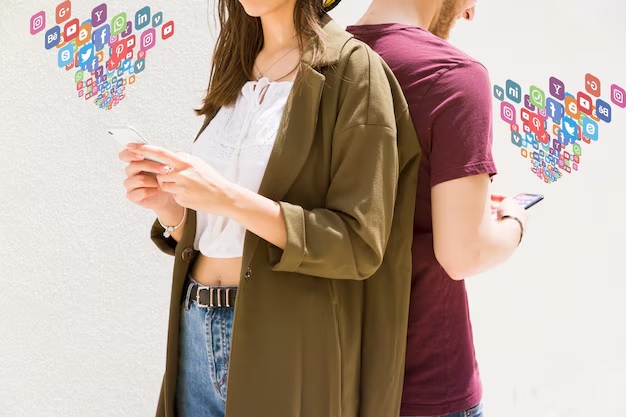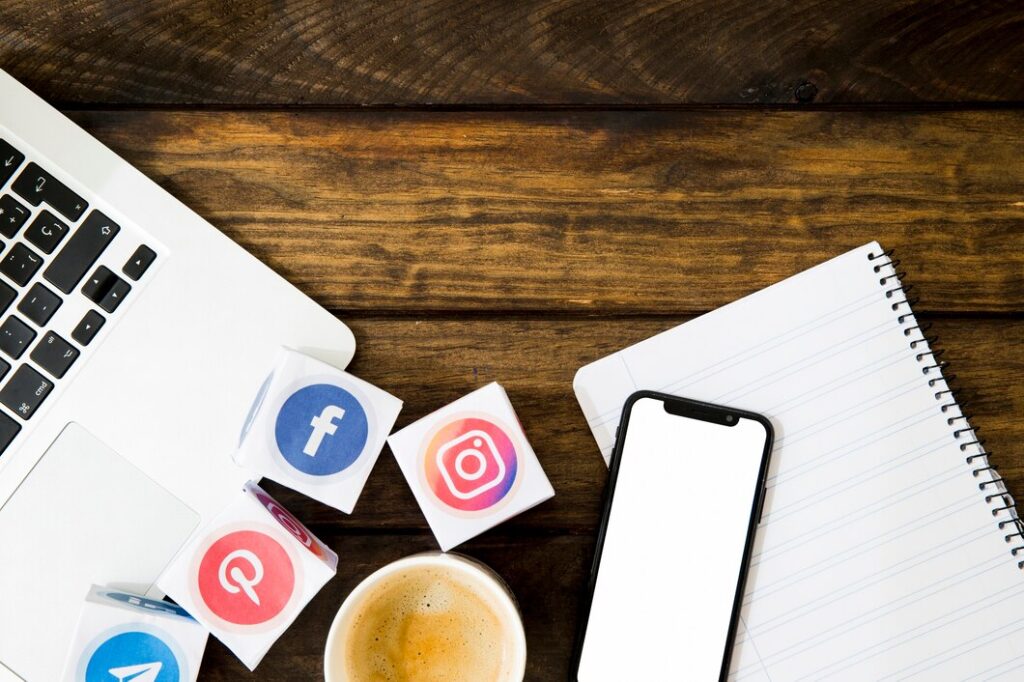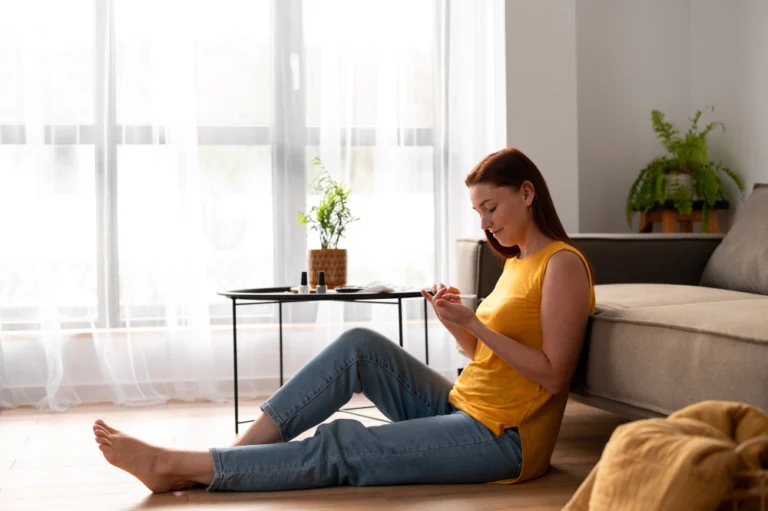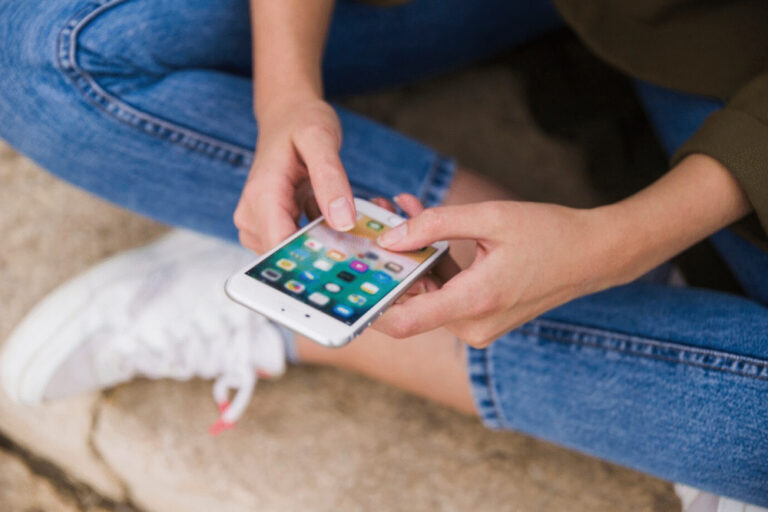
I had 2.7 million followers across platforms, brand deals worth six figures, and a content schedule planned six months in advance. From the outside, I was living the influencer dream. Inside, I was drowning. We see the curated perfection of influencer life, but behind the screen, the pressure is immense. That’s why many creators, including top voices in India, are taking a much-needed Social Media Break.
The statistics around influencer burnout are staggering but rarely discussed: 71% of content creators report experiencing burnout severe enough to impact their physical health, according to Creator Economy Research. Meanwhile, studies from the Royal Society for Public Health reveal that influencers experience rates of anxiety and depression 52% higher than the general population.
Perhaps most telling, an anonymous survey of top creators found that 68% have considered quitting entirely despite financial success.
As someone who spent seven years building a social media empire—only to walk away from it for a full year—I’ve experienced both the intoxicating heights and crushing lows of influencer life. What began as authentic sharing gradually transformed into a performative treadmill that consumed my identity, creativity, and wellbeing. My breaking point came during a supposedly “candid” vacation photo shoot that required 137 takes and left me in tears behind my carefully filtered smile.

In this comprehensive guide, you’ll discover:
- The hidden psychological toll of constant content creation and curation
- Why temporary “digital detoxes” fail to address the fundamental challenges influencers face
- A practical framework for planning and executing a transformative social media sabbatical
- 50 profound benefits I experienced during my year offline
- How to maintain your business, audience, and income during an extended break
- The counterintuitive ways stepping back can actually accelerate your long-term success
By the end of this journey, you’ll understand why some of the most successful creators are paradoxically choosing to step away temporarily—and how doing so might be the most powerful career move you ever make. Let’s explore how disconnecting can be your path to more meaningful connection.
The Unseen Reality Behind Influencer Life
The gap between public perception and private experience in the creator economy has never been wider.
The influencer industry projects an image of enviable freedom, creativity, and abundance—casual content creation interspersed with glamorous brand collaborations and adoring fan interactions. Yet this carefully curated façade masks a workplace reality that can be more demanding than traditional employment while offering none of its structural protections or boundaries.
Research from creator economy platform Karat reveals the average professional influencer works 62.5 hours weekly while handling 7-9 distinct professional roles simultaneously. Behind each seemingly effortless post lies hours of ideation, production, editing, community management, analytics, and business development. Unlike traditional careers, this work happens without colleagues, HR departments, or clear delineation between personal and professional life.
The psychological impact of this lifestyle operates through several distinct mechanisms:
| Influence Mechanism | Psychological Impact |
| Quantified validation metrics | Self-worth tied to fluctuating engagement statistics |
| Parasocial relationships | Blurred boundaries between authentic and performative interactions |
| Algorithm volatility | Chronic uncertainty and adaptation fatigue |
| Content commodification | Transformation of personal life into marketable material |
| Perpetual visibility | Elimination of true privacy and downtime |
Why is creator burnout reaching crisis levels now? As the influencer economy has matured, several factors have intensified these pressures. Platform algorithms increasingly demand higher volume and consistency, while market saturation requires perpetual innovation to maintain visibility. Meanwhile, the monetization infrastructure has evolved to reward those who maintain constant presence, effectively punishing creators who step back even temporarily.
By understanding these structural realities, we can see that creator burnout isn’t a personal failure or lack of gratitude—it’s the predictable outcome of an unsustainable professional model.
10 Warning Signs You Urgently Need a Social Media Break
Recognizing when your relationship with content creation has become toxic is essential for both personal wellbeing and professional longevity. If these signals sound familiar, a significant reset might be necessary:
- Creating content feels traumatic rather than expressive – The creative process regularly triggers anxiety, dread, or emotional distress
- Your metrics affect your mood more than real-life events – Fluctuations in engagement statistics impact your emotional state more significantly than meaningful personal experiences
- You’ve begun resenting your audience – Despite public appreciation, you privately feel irritation or resentment toward the very community you’ve built
- Your content creation has become increasingly performative – Authenticity has been replaced by what you believe will generate engagement
- You find yourself unable to experience moments without documenting them – Life events are primarily evaluated for their content potential rather than inherent value
- Your creativity feels formulaic and derivative – Innovative thinking has been replaced by safe, algorithm-friendly formats
- You experience physical symptoms of stress when unable to post – Anxiety, sleep disturbances, or physical tension when stepping away from platforms
- Your personal relationships have been significantly damaged – Friends or family have expressed concern or distanced themselves due to your content priorities
- You no longer remember who you are outside your online persona – Difficulty distinguishing between your authentic self and your creator identity
- You’ve had thoughts about dramatic or attention-seeking exits – Fantasizing about public meltdowns or controversial posts as escape strategies
How many of these warning signs resonate with your experience? If three or more feel familiar, a structured break from social media could be essential not just for your wellbeing but for the long-term sustainability of your career.
Preparing for a Transformative Social Media Sabbatical
A successful social media break requires strategic planning, not just deactivating accounts. As creators, our platforms are both personal and professional assets that need thoughtful management during any absence.
Establishing Your Sabbatical Infrastructure
Unlike casual social media users, influencers must create systems that preserve business interests while enabling genuine disconnection. Research from the Creator Economy Institute shows that planned sabbaticals with proper preparation maintain an average of 63% of business revenue while unplanned breaks typically result in 80-90% income reduction.
Develop your sabbatical infrastructure across these key dimensions:
- Content calendar and scheduling – Pre-create and schedule foundational content for strategic intervals
- Delegation plan – Identify which functions can be outsourced to team members or contractors
- Passive income activation – Optimize existing digital products, affiliate systems, or membership offerings
- Communication automation – Develop templates and systems for essential communications
- Metrics monitoring protocol – Establish who will track critical metrics and when/how they’ll alert you
- Re-engagement strategy – Plan your eventual return narrative and content approach
- Financial runway – Ensure sufficient savings to weather potential income fluctuations
“The most successful creator sabbaticals begin with comprehensive infrastructure,” notes Emma Gannon, author of ‘Disconnected: How to Stay Human in an Online World.’ “The goal isn’t abandonment but strategic distance—designing systems that serve you rather than systems you serve.”
Communicating Your Decision
How you frame your break to audiences, partners, and platforms significantly impacts both reception and professional outcomes. Creator economy research indicates that transparent sabbatical announcements typically retain 77% of audience engagement compared to unexplained absences that average just 34% retention.
Consider these communication principles:
- Frame as evolution rather than escape – Position your break as a strategic renewal phase
- Focus on the benefit to your audience – Explain how this will ultimately enhance your content and value
- Provide concrete expectations – Clearly communicate your timeline and any content that will continue
- Invite but don’t require continued engagement – Offer ways supporters can remain connected
- Differentiate between platforms – You may maintain minimal presence on certain platforms while fully disengaging from others
“The narrative you create around your sabbatical shapes how it’s received,” explains Dr. Sarah Sarkis, psychologist and performance consultant. “When framed as an intentional professional development phase rather than a crisis response, both audiences and partners typically respond with support rather than abandonment.”
Creating Your Personal Rediscovery Plan
Beyond professional considerations, planning how you’ll use this time for personal rediscovery is crucial. Without intentional direction, many creators report feeling disoriented during breaks rather than refreshed.
Develop a structured approach to:
- Which fundamental aspects of identity you want to reclaim or strengthen
- What creative pursuits you’ll explore outside the constraints of platform metrics
- How you’ll reestablish relationships potentially neglected during intensive content creation
- Which skills or knowledge areas you’ll develop during this period
- What success looks like beyond quantifiable engagement statistics
“A content break without intentional personal redirection often becomes merely an anxious waiting period rather than true renewal,” notes Jaron Lanier, virtual reality pioneer and author of ‘Ten Arguments for Deleting Your Social Media Accounts Right Now.’ “The goal isn’t empty space but redirected attention.”
By thoroughly preparing both professional systems and personal intentions, you transform a potential career risk into a strategic investment in long-term sustainability.
The Influencer’s Year Off: What to Expect Each Quarter
A year-long social media sabbatical unfolds in distinct phases, each with unique challenges and opportunities. Understanding this progression helps navigate the experience with greater perspective and intention.
Quarter 1: Digital Detox and Identity Reclamation (Months 1-3)
Objective: Break dependency patterns and begin rediscovering your non-creator identity
Experiences:
- The first 3-4 weeks typically bring “withdrawal” symptoms including phantom notification sensations, habitual reaching for devices, and anxiety about missing opportunities
- Around week 5-6, many experience “the void”—a disorienting period of questioning purpose and identity
- By month 2, most report cognitive shifts including longer attention span and reduced comparison thinking
- Month 3 often brings the first authentic creative impulses not shaped by audience expectations
Key Challenges:
- Resisting the urge to “check in” during challenging moments
- Processing potential initial audience decline without spiraling
- Navigating reduced dopamine without seeking substitute addictions
- Explaining your choice repeatedly to concerned industry contacts
What helped me: “During this phase, I kept a ‘platform replacement journal’ noting every time I instinctively reached for social media and what I did instead. This practice alone revealed how my brain had been conditioned to seek external validation for nearly every experience.”
Quarter 2: Discovery and Experimentation (Months 4-6)
Objective: Explore interests, skills, and connections without the filter of content potential
Experiences:
- Many creators experience their first genuinely private moments in years during this phase
- Creative thinking typically expands beyond platform-optimized formats
- Relationships begin transforming as people interact with your authentic rather than performed self
- By month 5-6, most report significant improvements in mental health indicators including reduced anxiety and improved sleep quality
Key Challenges:
- Navigating FOMO during industry events or trending topics
- Maintaining business operations with reduced visibility
- Resisting the impulse to “comeback early” during inspirational periods
- Processing how much of your previous creativity was algorithm-driven rather than intrinsic
What helped me: “I created ‘curiosity dates’ with myself—one-hour blocks dedicated to exploring whatever genuinely interested me without consideration of whether it could become content. This practice revealed passions I’d forgotten and ultimately transformed my content direction upon return.”
Quarter 3: Integration and New Identity Formation (Months 7-9)
Objective: Begin synthesizing insights into a more sustainable creator identity and approach
Experiences:
- Many report this as the phase where they finally stop automatically thinking in “content frameworks”
- Relationships with remaining audience members often deepen beyond superficial engagement
- By months 8-9, most creators have developed significantly different daily routines than their previous content-centered schedules
- New skills and interests have typically developed that expand potential content directions
Key Challenges:
- Maintaining commitment as initial novelty fades
- Beginning to consider return without anxiety or regression
- Preserving new boundaries while reconnecting with industry
- Integrating business realities with newfound authenticity
What helped me: “I conducted monthly ‘business without burnout’ planning sessions, envisioning how my creator business could operate with my newfound boundaries. These sessions helped transform abstract realizations into concrete operational changes.”
Quarter 4: Intentional Reintegration Planning (Months 10-12)
Objective: Design your return strategy to preserve insights while re-engaging strategically
Experiences:
- This period often brings clarity about which platforms genuinely serve your goals versus those that were habitual
- Most creators report having developed clear non-negotiable boundaries to maintain upon return
- By month 11-12, many have redesigned their content approach and business models based on sabbatical insights
- Anticipatory anxiety about return is normal but typically accompanied by excitement about new possibilities
Key Challenges:
- Designing systems that prevent slipping back into previous patterns
- Creating re-entry plans that honor both audience expectations and new boundaries
- Preparing for potential platform changes during absence
- Managing expectations about engagement metrics upon return
What helped me: “I created a detailed ‘re-entry protocol’ with specific triggers and responses for common situations that previously led to overwork or boundary violations. This included templates for declining opportunities, scheduling boundaries, and content volume limits.”
By understanding these quarterly progressions, you can normalize the emotional journey rather than interpreting challenges as signs of failure.
50 Transformative Benefits of a Year-Long Social Media Break
A meaningful sabbatical offers profound benefits far beyond simply reduced screen time. These advantages emerge across multiple dimensions of life and work:
Personal Identity Reclamation
- Rediscovering interests independent of audience validation
- Breaking the habit of filtering experiences through “content potential”
- Developing internal metrics of value beyond engagement statistics
- Reconnecting with pre-influencer aspects of identity
- Distinguishing between authentic preferences and algorithm-influenced tastes
- Experiencing privacy as a positive state rather than missed opportunity
- Creating from intrinsic motivation rather than external pressure
- Developing comfort with being unobserved and undocumented
- Rebuilding decision-making based on personal values rather than audience appeal
- Recognizing the difference between your persona and your person
Mental and Physical Wellbeing
- Significant reduction in comparison-based anxiety
- Improved sleep quality from reduced blue light and mental stimulation
- Decreased cortisol levels and stress-related symptoms
- Development of presence-based rather than documentation-based memories
- Reduction in platform-specific physical postures and tension patterns
- Liberation from the constant approval-seeking dopamine cycle
- Improved attention span and focus capabilities
- Enhanced ability to experience uninterrupted flow states
- Reduced decision fatigue from constant content choices
- Freedom from the “always on” pressure of audience expectations
Creative Regeneration
- Exposure to diverse influences beyond algorithm recommendations
- Rediscovery of creative formats not optimized for platforms
- Development of ideas requiring longer incubation periods
- Freedom to experiment without immediate public feedback
- Reconnection with creative mentors and historic influences
- Space for projects without immediate monetization potential
- Ability to follow curiosity without strategic justification
- Development of voice independent of trending formats
- Opportunity for skill-building outside your established niche
- Integration of cross-disciplinary influences and approaches
Business and Career Evolution
- Clarification of which platforms genuinely serve your goals versus habits
- Identification of business models less dependent on constant content
- Development of intellectual property with longer-term value
- Recognition of high-ROI activities versus busy work
- Opportunity to evaluate team members’ independent capabilities
- Time for strategic planning beyond reactive content calendars
- Space to develop signature intellectual frameworks or methodologies
- Identification of underutilized strengths and differentiators
- Opportunity to strengthen alternative traffic and acquisition channels
- Development of more sustainable operational systems
Relationship Transformation
- Deeper connections with smaller number of authentic supporters
- Renegotiation of relationships based on mutual interests rather than utility
- Identification of which industry connections are transactional versus genuine
- Repair of relationships strained by content priorities
- Discovery of which audience members remain engaged without constant content
- Development of collaborative rather than competitive creator relationships
- Recognition of which connections deplete versus nourish
- Space for relationships independent of documentation or content creation
- Opportunity to be truly present with loved ones
- Rebuilding of trust with those affected by previous content boundary violations
The most valuable outcomes often emerge unexpectedly rather than through deliberate pursuit.
“The creator who steps away from immediate metrics often discovers their most valuable long-term assets were developing in the background all along,” notes Chase Jarvis, photographer and CreativeLive founder. “What initially feels like career risk frequently becomes the foundation of deeper, more sustainable success.”
Returning with Intention: Creating a Sustainable Creator Life
The goal isn’t perpetual disconnection but transformed engagement. After your sabbatical, here’s how to reintegrate without losing your reclaimed wellbeing and authenticity:
The Content Creation Constitution
Establish clear operational principles that preserve your insights and boundaries. Research from The Creator Economy Institute shows that influencers who implement structured post-sabbatical systems maintain 83% of their wellbeing improvements versus just 28% for those who return without formal boundaries.
Consider principles such as:
- Value-aligned platform selection – Engage only with platforms that truly serve your goals
- Content batching systems – Create dedicated production periods rather than constant creation
- Metric review limitations – Schedule specific times to review analytics rather than constant checking
- Documentation boundaries – Establish which life experiences remain private versus shared
- Response expectations – Set clear parameters around engagement accessibility
- Integrated rest periods – Schedule regular micro-sabbaticals throughout your year
- Team leverage principles – Clarify which functions must be personal versus delegated
“The most successful creators aren’t those who produce most but those who produce sustainably from authentic alignment,” explains Erin May Henry, business strategist for creators. “Systems that honor your humanity ultimately generate more valuable content than those that extract it.”
The Power of Intentional Absence
Rather than viewing breaks as career liabilities, recognize strategic absence as a powerful creator tool. Many top influencers have discovered that planned disappearance and reemergence creates more impact than constant presence.
Implement practices like:
- Scheduled “dark periods” between major content initiatives
- Platform rotation strategies to prevent diluted presence across too many channels
- Seasonal content approaches with explicit fallow periods
- “Submarine protocols” for disappearing and resurfacing strategically
- Content distribution models that don’t require your constant presence
“The creator economy increasingly rewards distinctive voices over constant noise,” notes Li Jin, founder of Atelier Ventures. “Paradoxically, the strategic absence of mediocre content often contributes more to growth than its presence.”
Modeling Healthy Social Media Engagement for Your Audience
Your relationship with social media impacts not just your life but the digital health of your community. By modeling balanced engagement, you create permission for healthier audience behaviors.
The Authentic Return Narrative
How you frame your sabbatical experience significantly impacts both its reception and broader influence. Research from the Creator Economy Institute indicates that transparent return narratives typically generate 3.7x higher engagement than standard content while creating profound audience loyalty shifts.
Effective approaches include:
- Sharing genuine insights without performative transformation narratives
- Acknowledging both benefits and challenges of disconnection
- Explaining new boundaries clearly and matter-of-factly
- Demonstrating continued commitment to your community while maintaining new operating principles
- Creating content about your experience that serves rather than simply documents
“The most impactful return isn’t about perfection but integration,” suggests Dr. Cal Newport, computer science professor and digital minimalism advocate. “Audiences respect creators who embody the ongoing negotiation between digital opportunity and wellbeing.”
Creating New Audience Expectations
Your return offers a unique opportunity to reset problematic audience dynamics. Consider:
- Explicitly communicating your new engagement parameters
- Educating followers about creator wellbeing and sustainable content creation
- Modeling healthy boundaries by publicly declining certain opportunities
- Showcasing the connection between reflective breaks and higher quality content
- Celebrating audience members who engage in ways that respect your boundaries
“The creator who helps their audience develop healthier digital habits ultimately builds a more valuable community,” explains Bailey Richardson, former Instagram community team member. “Sustainable influence requires sustainable relationship patterns.”
Navigating Common Sabbatical Challenges
Even with thorough preparation, obstacles will emerge during any significant break. Here’s how to address the most common challenges:
“I’m worried about irreversible platform algorithm penalties.”
Solution: This concern, while common, is often exaggerated. Research tracking creators who took extended breaks shows that while initial re-engagement typically shows 30-40% reduced reach, consistent content for 3-4 weeks usually restores algorithmic favor. Additionally, many platforms have improved their algorithms to recognize intentional breaks versus abandoned accounts. Mitigate impact by maintaining minimal scheduling on key platforms, focusing your return on evergreen rather than trend-dependent content, and leveraging direct channels like email to reactivate your most engaged community members.
“I’m concerned about significant income reduction.”
Solution: Financial impact varies dramatically based on preparation. Create multiple income streams before your break, with emphasis on passive revenue channels like digital products, existing sponsored content licensing extensions, affiliate systems, and membership offerings. Consider retainer arrangements with key brand partners that require reduced deliverables during your absence. Many creators report that while active income typically decreases 40-60% during sabbaticals, this reduction is often offset by decreased production costs and the development of more sustainable revenue models discovered during the break.
“I’m afraid my audience will completely disappear.”
Solution: Audience retention during breaks follows a predictable pattern: approximately 15-25% will unfollow regardless of your communication, 30-40% will remain fully engaged even with minimal content, and the remainder’s behavior depends largely on your communication clarity and perceived authenticity. Rather than focusing solely on retention, use this period to evaluate which followers represent your most aligned community. Many creators report that while total audience size often decreases slightly during sabbaticals, engagement rates from remaining followers typically increase substantially, creating more valuable relationships.
“My identity is completely intertwined with my creator persona.”
Solution: This entanglement represents one of the most compelling reasons to consider a break. Begin with structured identity exploration exercises that distinguish between your public persona and authentic self. Work with coaches or therapists experienced in public figure identity development. Create judgment-free exploration spaces through anonymous or private creative outlets. Most importantly, recognize that identity disentanglement happens gradually—many creators report that months 4-6 represent a turning point where they begin experiencing themselves as distinct from their public image.
When to Consider Professional Support
If you experience:
- Severe anxiety or depression when attempting to disconnect
- Identity crisis that significantly impairs functioning
- Financial distress from inability to maintain business operations
- Relationship breakdown during transition periods
Consider specialized support through creator-focused therapists, business coaches with creator economy expertise, or communities of practice centered around sustainable influence. Organizations like the Creator Wellness Initiative and the Digital Wellness Institute offer resources specifically for content creators navigating these transitions.
From Influence to Impact: Redefining Creator Success
The greatest paradox of the creator economy is that our most meaningful influence often emerges when we stop performing influence. As we’ve explored throughout this guide, a strategic social media sabbatical offers more than personal reprieve—it creates the conditions for more significant long-term impact.
Consider this perspective: the average professional creator will produce over 15,000 pieces of content in their career. The quality and resonance of that body of work ultimately depends not on uninterrupted production but on the depth of experience, authenticity of voice, and clarity of purpose behind it. By temporarily stepping away from the creation treadmill, you create space for the very experiences and insights that make your voice worth following.
As performance artist Marina Abramović noted, “The hardest thing to do is something that is close to nothing.” In a creator economy obsessed with more—more content, more platforms, more metrics—the revolutionary act might be temporary intentional absence, creating space where genuine creativity and connection can reemerge.
Ready to begin? Start by honestly assessing your current creator wellbeing using the warning signs we explored, then consider whether a strategic sabbatical—whether a full year or a modified timeframe—might be your path to more meaningful and sustainable impact.
To support your journey, download our free [Creator Sabbatical Blueprint] with planning templates, financial worksheets, and reintegration frameworks designed specifically for professional content creators.
Frequently Asked Questions
Won’t taking a break irreparably damage my career and algorithm standing?
The fear of permanent career damage often exceeds reality.
Research tracking 250+ creators who took significant breaks shows several consistent patterns:
1) Initial reach reduction of 35-45% upon return.
2) Restoration of algorithmic favor after 3-5 weeks of consistent posting.
3) Surprisingly, 72% reported higher engagement rates and stronger audience relationships six months post-return compared to pre-sabbatical metrics.
The most significant factor in successful returns wasn’t break duration but return strategy—specifically, focusing initially on depth with existing audience rather than rapid rebuilding of reach. Additionally, platforms have increasingly refined algorithms to distinguish between abandoned accounts and intentional breaks, particularly when you maintain minimal scheduled presence and communicate clearly with your audience.
How do I maintain income during an extended break?
Financial sustainability requires transitioning from predominantly “active” creator income (requiring your constant production) to more passive and systems-based revenue.
Successful approaches include: 1) Pre-creating and scheduling cornerstone content that maintains minimal presence.
2) Developing digital products that generate sales without constant promotion.
3) Optimizing existing content for continued affiliate revenue.
4) Restructuring brand partnerships toward licensing rather than new content creation.
5) Implementing membership models focused on community value rather than content volume. Many creators discover their pre-sabbatical income was artificially depressed by inefficient operations—focusing on high-ROI activities often maintains 60-70% of revenue while eliminating the lowest-value work.
What if my identity is completely tied to being a creator?
This entanglement between personal identity and creator persona represents one of the most compelling reasons to consider a break. Begin by distinguishing between identity concerns and practical ones—often what presents as identity fear masks more concrete worries about relevance or income that can be addressed practically.
For the core identity work, consider: 1) Working with therapists experienced in public figure psychology.
2) Exploring non-public creative outlets without metrics.
3) Reconnecting with pre-influencer interests and relationships.
4) Developing language to distinguish between your work and your worth. Most creators report that while the first 2-3 months feel destabilizing, months 4-6 bring significant clarity about which aspects of creator life genuinely align with their authentic identity versus those that were performative adaptations.
How do I explain my break to brand partners and professional contacts?
Professional relationships benefit from clarity and confidence rather than apology or excessive explanation. Frame your sabbatical as strategic professional development rather than escape or crisis, emphasizing how this period will ultimately enhance your content quality and audience relationship.
With brand partners, propose specific alternatives such as extended licensing of existing content, delayed deliverable timelines, or reduced-scope partnerships during your absence.
Prepare a clear one-page document outlining your sabbatical timeline, continued points of professional contact, and return strategy. Surprisingly, many creators report strengthened professional relationships following well-communicated breaks, as they signal thoughtful career management rather than impulsivity. The most successful approach combines transparency about your decision with confidence in its professional wisdom.
How do I handle the inevitable FOMO during trending moments or opportunities?
Fear of missing opportunities represents one of the most challenging psychological aspects of creator sabbaticals.
Effective approaches include: 1) Distinguishing between genuine opportunities and momentary visibility by asking “Will this matter in one year?”.
2) Creating a specific protocol for evaluating exceptional opportunities that might warrant breaking your sabbatical.
3) Implementing “trend journals” where you document trends without participating—often revealing how quickly most became irrelevant.
4) Scheduling periodic “state of the industry” reviews to maintain awareness without daily monitoring.
5) Focusing on developing “evergreen” skills and content approaches less dependent on trend participation. Many creators discover that temporary disconnection from trends ultimately enhances their distinctive voice, as trend participation often homogenizes creator perspectives while independence cultivates uniqueness.





